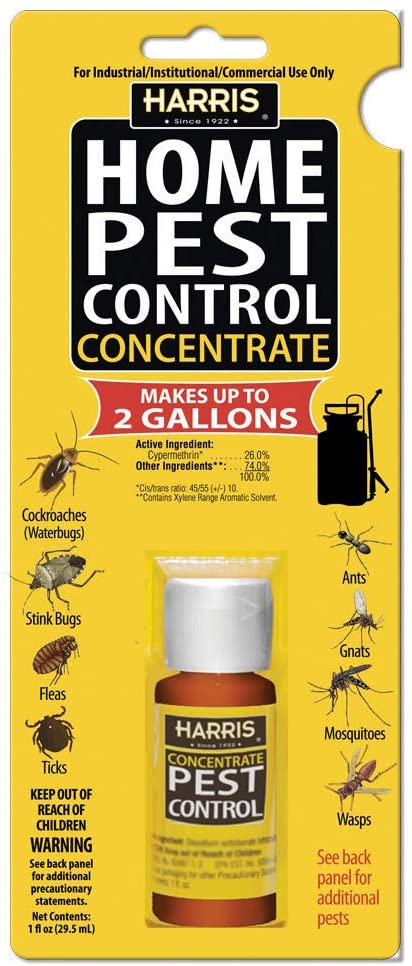Effective A1 Bed Bug Treatment in Charlotte - Safe and Proven Methods
Effective A1 Bed Bug Treatment in Charlotte - Safe and Proven Methods
Blog Article
Bed Pest Treatment Break Down: Comparing Chemical Vs. Non-Chemical Solutions
In the world of bug control, particularly when handling the persistent concern of bed insects, the option between chemical and non-chemical treatment solutions can be a pivotal one. Both strategies provide distinct advantages and downsides, influencing factors such as performance, safety factors to consider, and general cost. By checking out the nuanced information of each approach, a clearer understanding of which path to go after in addressing a bed insect infestation can be acquired.
Effectiveness of Chemical Therapies
Chemical therapies for bed insect problems have been widely identified for their quick and powerful effectiveness in eradicating these pests. When taking into consideration the efficiency of chemical therapies, it is vital to understand that they can give a quick and detailed solution to a bed pest issue. Professional pest control operators usually count on insecticides to target bed insects at numerous phases of their life cycle, consisting of fairies, grownups, and eggs. These chemicals commonly function by interrupting the bed insects' anxious system, resulting in paralysis and ultimate fatality.
Moreover, chemical therapies have the advantage of offering recurring results, suggesting that they can remain to remove bed pests also after the preliminary application. This residual action is especially valuable in combating any kind of prospective re-infestations. Furthermore, the quick action of chemical treatments can bring alleviation to individuals facing severe bed insect invasions, allowing them to gain back control of their living areas rapidly.
Security Interest In Chemical Solutions
One critical facet that needs mindful factor to consider when making use of chemical options for bed pest therapy is guaranteeing the safety and security of occupants and the atmosphere. Exposure to certain chemicals made use of in bed bug therapies can lead to respiratory concerns, skin irritability, or various other damaging responses, especially in individuals with pre-existing problems or sensitivities.
Additionally, the ecological impact of chemical solutions is an additional substantial factor to consider. Some chemicals utilized in bed bug therapies may be dangerous to advantageous bugs, wildlife, and environments if they leach into the dirt or water supply. It is vital to use chemical therapies carefully, adhering to safety standards, and thinking about less hazardous choices to reduce these risks and make sure the safe and reliable management of bed bug infestations.
Benefits of Non-Chemical Techniques
Taking into consideration the potential safety issues and ecological effect connected with chemical options for bed pest treatment, checking out non-chemical techniques provides an appealing option with a number of distinctive advantages. Non-chemical therapies are eco pleasant, as they do not contribute to air or water contamination, making them a lasting option for bug control.
Furthermore, non-chemical services can be efficient in targeting bed insects, consisting of hard-to-reach areas where chemical treatments may not penetrate. Techniques such as warm treatment, vacuuming, steam cleansing, and mattress coverings supply extensive obliteration without making use of dangerous chemicals. In addition, non-chemical techniques can be less turbulent, calling for very little preparation and enabling quicker reentry right into treated locations. Generally, choosing non-chemical bed insect therapy approaches not just prioritizes security and ecological security yet also ensures reliable and detailed bug control.
Limitations of Non-Chemical Treatments

Furthermore, non-chemical therapies typically need numerous applications to achieve effective obliteration. This can be lengthy and might not constantly guarantee A1 bed bug exterminator charlotte total elimination of all bed bugs and their eggs, specifically in concealed or hard-to-reach locations.
In addition, the success of non-chemical treatments heavily relies upon proper execution and thoroughness, which can be challenging for people without expert know-how. Insufficient application of non-chemical techniques might lead to incomplete removal, causing relentless invasions and the requirement for added therapies.
As a result, while non-chemical treatments have their benefits, it is vital to recognize these constraints and consider them when identifying one of the most efficient strategy for taking care of bed bug infestations.
Price Comparison: Chemical Vs. Non-Chemical Options
Provided the restrictions linked with non-chemical therapies, an essential facet to examine in the context of bed pest monitoring is the price contrast between chemical and non-chemical alternatives. In comparison, non-chemical therapies like warm treatment or heavy steam can be much more costly, with expenses ranging from $1,000 to $6,000 for a whole home. While the initial expense of chemical therapies may appear lower, multiple therapies might be called for to completely remove the problem, potentially boosting the total cost.
Conclusion

Considering the prospective safety problems and ecological influence associated with chemical services for bed pest therapy, exploring non-chemical methods provides an appealing choice with numerous distinct advantages.Offered the constraints connected with non-chemical therapies, a crucial facet to evaluate in the context of bed insect monitoring is the price contrast in between chemical and non-chemical options. In comparison, non-chemical treatments like warmth treatment or heavy steam can be much more expensive, with expenses ranging from $1,000 to $6,000 for an entire home. While the preliminary price of chemical treatments might appear reduced, several therapies may be needed to fully remove the infestation, possibly increasing the total price.In conclusion, when comparing chemical and non-chemical bed bug therapy options, it is crucial to think about performance, safety and security, advantages, limitations, and expense.
Report this page